Posted on Oct 26, 2018
What Are the Standard Book Sizes in Publishing?
Glance at the nearest bookshelf. Have you noticed that books come in all shapes and sizes? Contrary to popular belief, this isn’t because publishers are out to obliterate the perfect symmetry of our bookshelves. The truth is that book sizes vary based on each individual book — and publishers determine these sizes based on economic, practical, and artistic factors.
If you’re a self-publisher planning to produce physical copies of your book, you might be wondering if this should matter to you. The answer: yes. Your choice of book size will not only affect how you go about typesetting your manuscript but your audience’s reading experience and your potential profit margin.
In this post, we’ll take you through the standard book sizes in the industry, why they’re important, and what should be on your mind as you pick out the best trim size for your own book.

FREE RESOURCE
Reedsy’s Book Launch Checklist
Launch your book successfully with our tried-and-true strategies.
What is trim size?
“Trim size” is essentially the publishing term for “book size.” After each copy is printed and bound, the book is mechanically “trimmed” so that the size of every page is uniform. The trim size relates these dimensions, in Width x Height format.
In the U.S., the trim size is denoted in inches; in Europe, it’s in millimeters. For future reference, we’ll be using the U.S. format and talking about U.S. book sizes in this post.
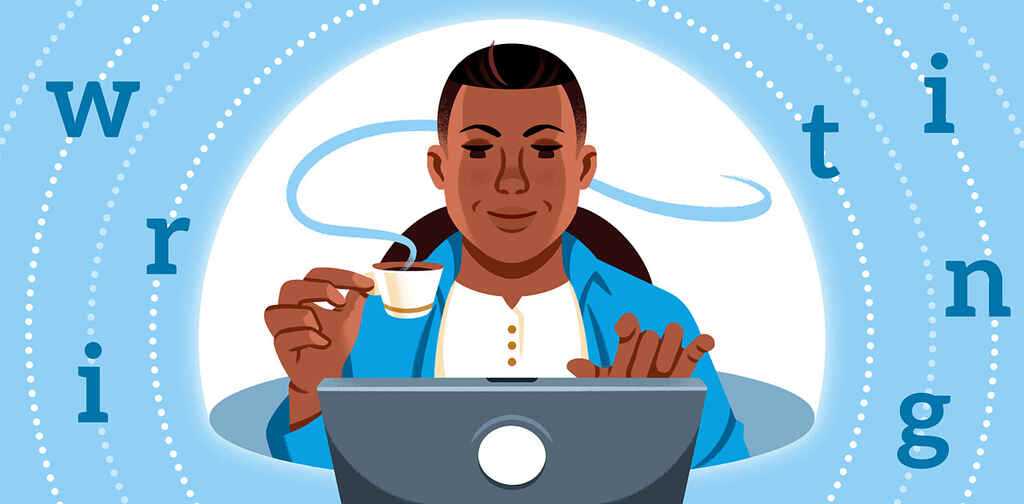
FREE FORMATTING APP
The Reedsy Book Editor
Format your manuscript for print or EPUB with a single click.
Why does trim size matter?
Asking why you should care about your book’s trim size is akin to asking, “Why do people make a big fuss over the iPhone’s shape?” You want a phone that’s sleek and a joy to grip — not an awkward clunker. In much the same way, you can boil the importance of trim size down to three things: reading experience, marketability, and cost.
Trim size determines a book’s presentation
If you imagine your physical book as a house, then the trim size is its footprint. It bolts in the size of your “real estate,” and influences both the interior and exterior of your book.
In a nutshell, the trim size dictates your page count. The smaller your trim size, the more pages will be required for your content. It also impacts your book’s spine: the more pages in your book, the thicker its spine will be — and the more substantial it will appear on the bookshelf. The book cover's dimensions will be affected. Your choice of trim size will also assert a ripple effect on most aspects of your book’s interior. How many words will fit comfortably on a page? How wide can your margins go?
When you’re typesetting your book, you’ll need to maneuver a number of ingredients on the page: everything from the baseline grid to the size of your font. The page trim size is one critical part of this complex balance — and the first you'll need to decide — that will create a beautiful book.

To find out more about the art of typesetting, check out this primer.
Trim size affects costs and pricing
Another important reason to care about your choice of trim size: it can affect your printing costs. Since print-on-demand presses charge you based on page count (and page count depends on trim size), your book’s size could possess a knock-on effect on your final profit margin.
But more on costs and pricing in a bit! First, we’re going to dive straight into something that you’re probably wondering: what are the standard book sizes in the publishing industry?
Psst — want to find out if you're 100% ready to self-publish your book? Take our short quiz below to discover what steps you might've missed.
✅
Are you ready to self-publish your book?
Find out here! Takes one minute.
What are the industry's terms for trim sizes?
Standard book sizes can vary depending on your genre. Let’s first define some familiar industry terms to give you some context for the numbers coming next.
Mass-market paperbacks: Compact and inexpensively-produced, these books (also called pocket books) are around 4.25” x 6.87”. You’ll find them on the racks of grocery stores and supermarkets.
Trade paperbacks: The better-quality books you might pick up in a Barnes & Noble bookstore, trade paperbacks are probably what you picture when you think of a paperback book. Trade paperback sizes will range anywhere from 5.5” x 8.5” (a size that’s called digest) to 6” x 9” (also known as US trade). In today’s market, this is the go-to paperback size range for many novels, memoirs, and non-fiction books.
Hardcover: You’ll probably be familiar with these premium formats. These book sizes tend to range from 6” x 9” to 8.5” x 11”.
Here’s a real-world comparison of some trade paperback sizes:

And now that you’ve got a frame of reference, it’s time to go broad! Let’s break down book sizes by genre.
What are the standard book sizes in publishing?
For your reference, the standard book sizes in inches are:
- Fiction: 4.25 x 6.87, 5 x 8, 5.25 x 8, 5.5 x 8.5, 6 x 9
- Novella: 5 x 8
- Children’s: 7.5 x 7.5, 7 x 10, 10 x 8
- Textbooks: 6 x 9, 7 x 10, 8.5 x 11
- Non-fiction: 5.5 x 8.5, 6 x 9, 7 x 10"
- Memoir: 5.25 x 8, 5.5 x 8.5
- Photography: Whatever you see fit!
Infographic: Standard Book Sizes for Each Genre
Here is a visual comparison of these sizes below:
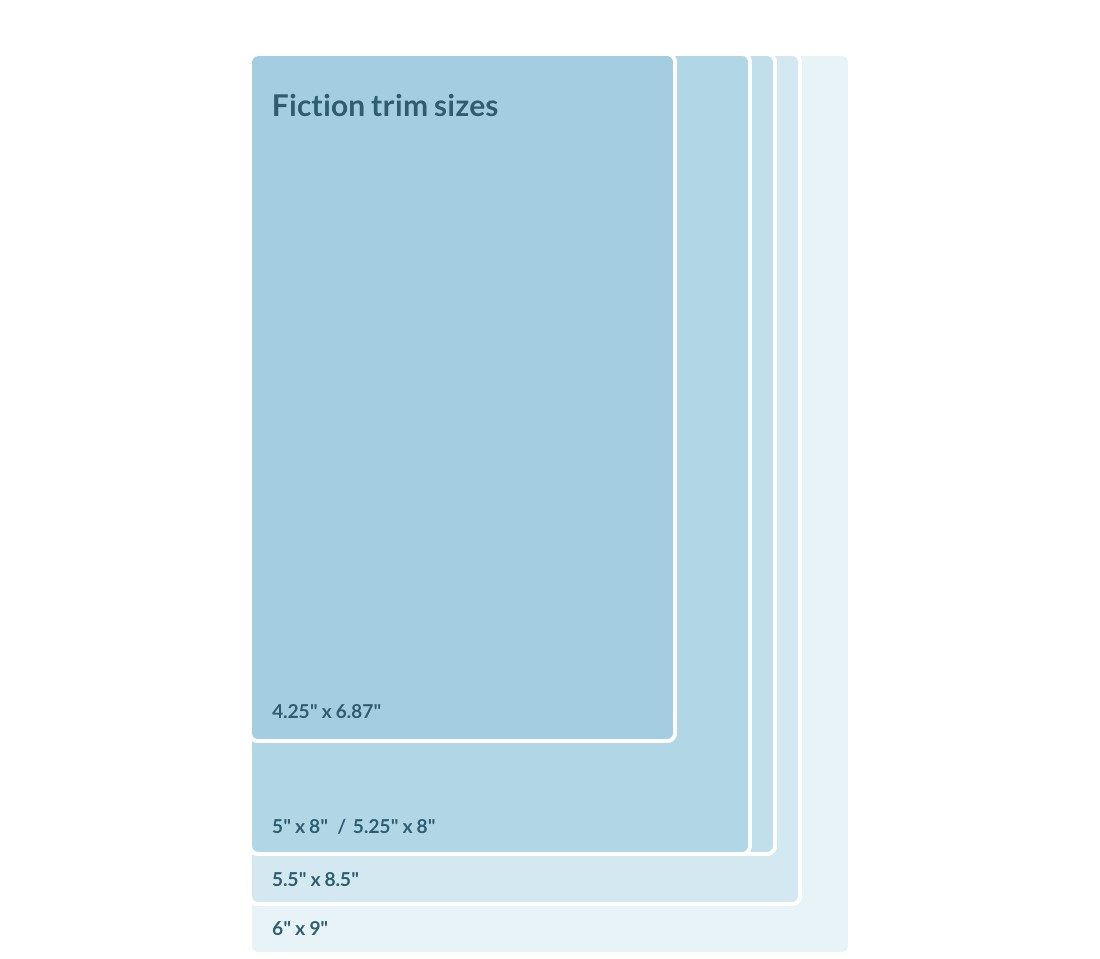
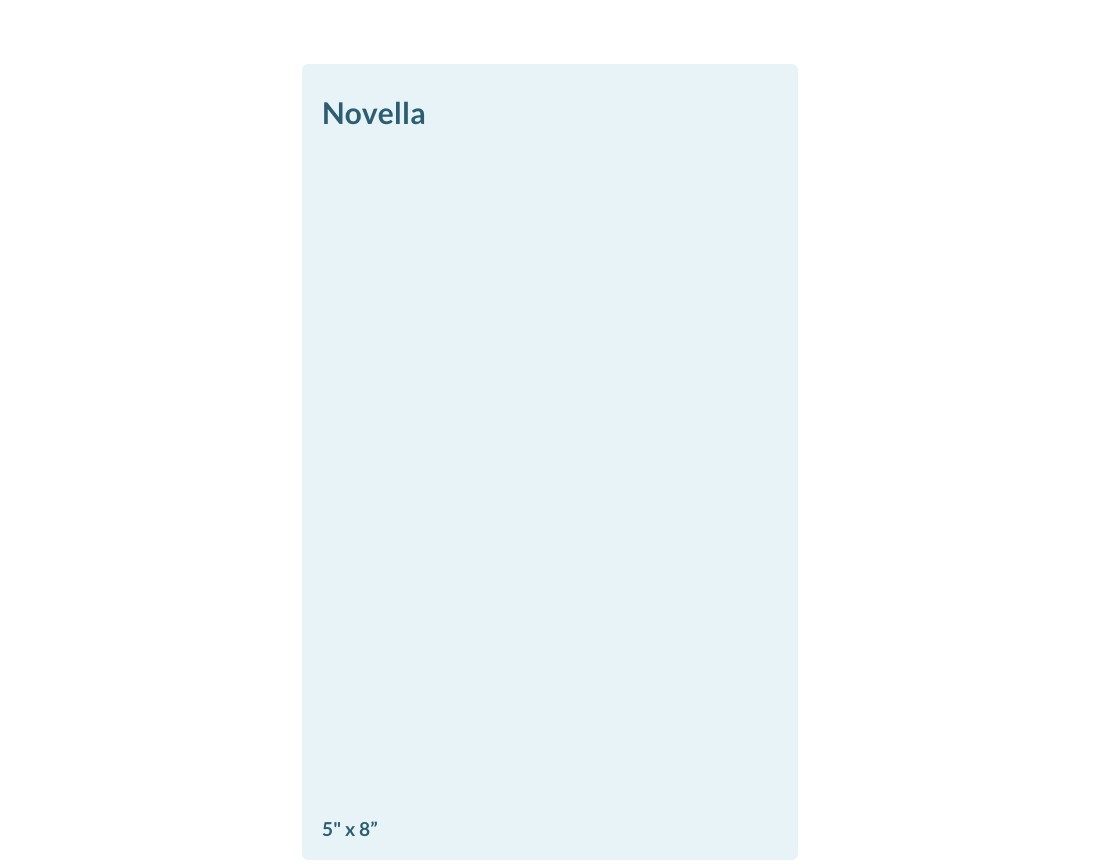


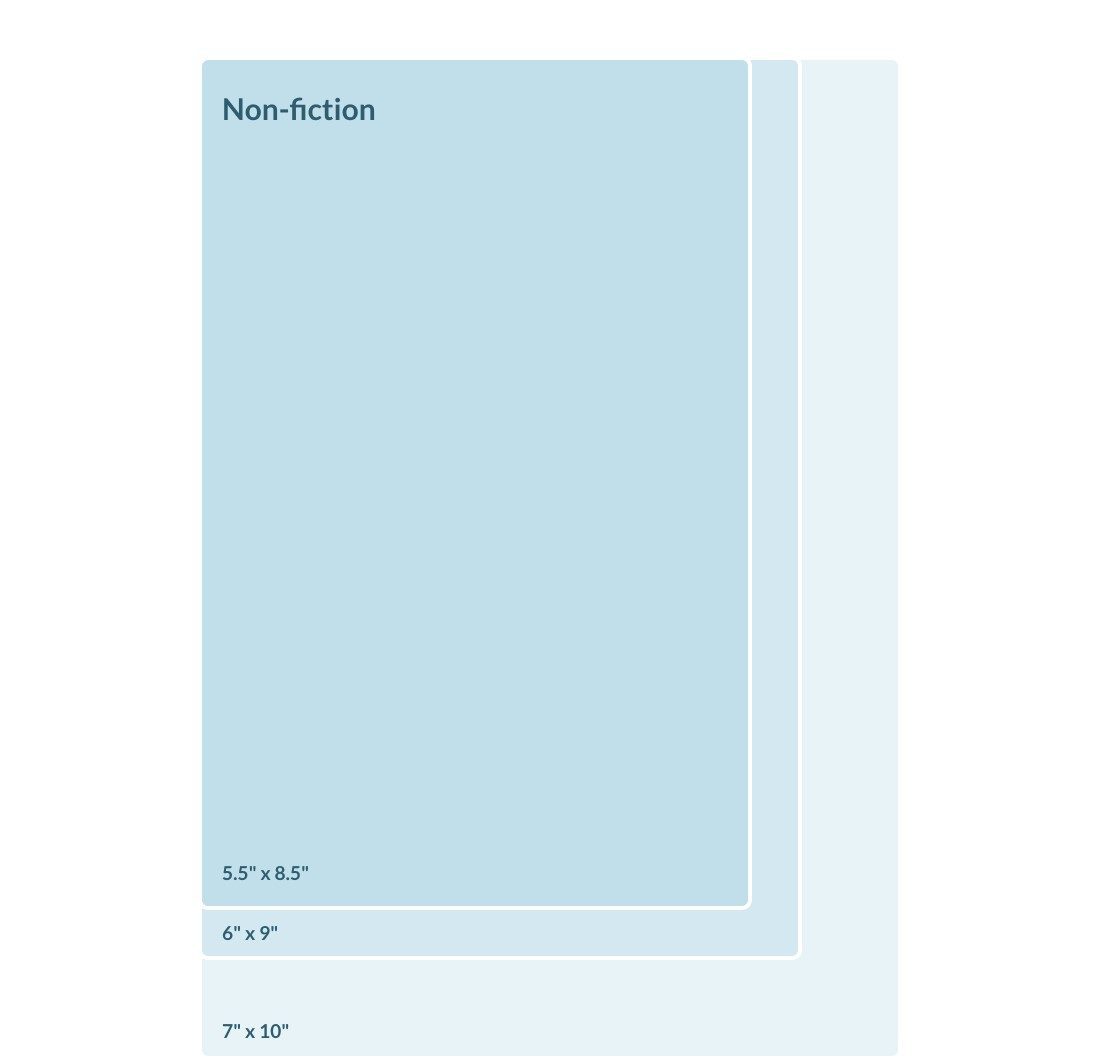
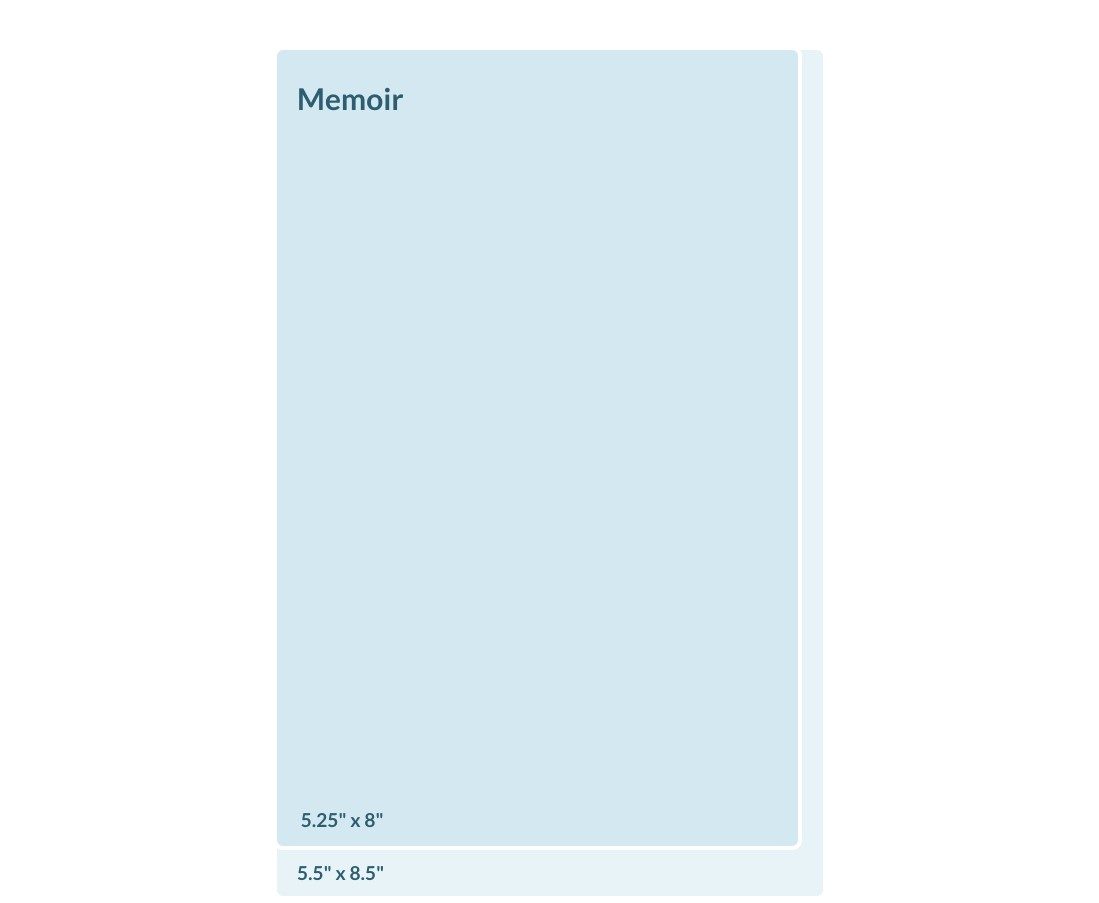
How should I pick my book’s trim size?
There’s no clear-cut way to determine the “best” trim size for your book, as it ultimately depends on your personal aesthetic preferences. That said, we’ve pointed out a few key considerations for your decision-making process below.

FREE COURSE
How to Self-Publish a Book
Learn to set yourself up for success as an indie author.
Digital or offset?
Let’s say, for example, that you want to print a book that’s an unusual 4” x 20”. Is that possible?
Sure, if you use something called offset printing. An offset printing company will charge you upfront, and you can use them to print almost any custom size you want.
However, the consensus is that offset printing makes financial sense only when you’re planning on doing a big print run — or when you absolutely must get your book printed in a size that no print-on-demand company offers. Otherwise, most authors are fine choosing one of the book sizes offered by print-on-demand companies.
We’re focusing on digital printing in this post and the following tips are for picking a POD size. Speaking of which...
What should I consider before picking a trim size?
Before settling on a paperback size, consider these three factors which will play a sizeable role in your decision (get it?):
Choose a trim size that suits your word count
A general guidepost: the more words in your manuscript, the bigger your book’s trim size can be. It makes sense, since that’ll reduce page count. (Take The Hunger Games, which is 101,900 words. Its trade paperback size is 5.5” x 8.5”.) Vice-versa, if your book is short, a smaller trim size can make it physically seem more substantial. Ernest Hemingway’s The Sun Also Rises, for instance, is 67,707 words, and its Penguin Classic’s paperback edition is a relatively slight 5.2” x 8” frame.
Tailor your trim size to genre standards
When readers are searching for their next book, you can bet that they’ll gravitate to the familiar. “This book looks like that other one I loved — maybe I’ll check it out.” So if you publish a Harlequin-style romance novel using a 9” x 7” trim size, it’ll almost certainly throw fans of the genre off — and not in a good way.
Since your best marketing move (nine times out of ten) is to make your book meet potential readers’ expectations, definitely double-check the typical measurements of your specific genre before going off-piste and picking a trim size that’s wildly uncommon in the genre. The majority of authors choose a trim size that’s comparable to the mainstream trade paperback releases in their genre.
Consider the cost implications
If you plan on printing digitally, keep in mind that print-on-demand printing presses will charge you based on your page count. The more pages in your book, the more the cost of printing will be — and the smaller your profit margin!
Page count also plays a role in the royalties you’ll retain (since print-on-demand companies will share part of your compensation). Based on a retail price of $11 and a standard book size of 5.5” x 8.5”, we broke down a theoretical situation for you below. Here are your royalties if your page count was:

Even though that might make a bigger book size (with fewer pages) suddenly seem mighty attractive, you don’t necessarily want to run straight for the cheapest possible option. In keeping with our theme of the day, it depends on your target audience. Fans of cookbooks, for instance, will appreciate a premium product. And could a reader easily tote your book around if it was 6” x 9”? Probably not. If you want people to read your book on-the-go, you might instead want to aim for 5.5” x 8.5” or a similar size that’s more portable.
💸
How much will it cost you to self-publish?
Find out here! Takes 30 seconds.
Our best advice is to spend some time in a bookstore with a tape measure. Study the books in your genre and measure their paperback sizes. Then pick up one of the books. How does it feel? Clunky, or just right? Does the content fit comfortably onto the pages? Does it stand out when you put it back on the shelf or does it “match” other books in your genre? If you’ve already decided to print your book, it’s worth remembering that a physical book should always be adding some value over an eBook. So make it count!
Where to find your file requirements
As we mentioned earlier, print-on-demand presses such as KDP Print, and IngramSpark have resources on their websites that will expressly state their trim size options and their requirements for each trim size:
- Amazon KDP
- IngramSpark (scroll down to 'What are IngramSpark's File Requirements for Print Books?")
Look through them carefully and take into account the different distribution options. Familiarize yourself with the dimensions on offer. And make sure you view a sample chapter to find out what your content will look like on the page.
Paperback and hardback cover file requirements
Each print-on-demand service will also have specific requirements for print cover files, which also vary depending on trim size, format, and your page count (the more pages, the thicker your spine.
- Amazon's KDP has a cover calculator that can help you determine the precise dimensions of your cover file.
- IngramSpark has a similar Cover Template Generator which will allow you to determine the precise measurements for your paperback and hardcover editions.
If you are working with a professional book designer, it is your responsibility as the author/publisher to prove them with the correct dimensions for your cover file.
For our review of four major print-on-demand services, check out this post.
Putting it together
If you want to experiment with book sizes and the way they might impact your typesetting choices, the Reedsy Book Editor allows you to do so for free. The Editor also provides four popular trim sizes for formatting (4.25 x 6.87 in, 5 x 8 in, 5.5 x 8.5 in, 6 x 9 in).
Having some real-life examples at your side, you should get a better sense of which trim size is best for your book. And if you find yourself truly struggling to pick between book sizes (particularly for those working on illustrated content or unique products that require the right paper and format), why not reach out to a professional book production manager for some advice? Their expertise in these matters is unmatched, and they’ll be able to polish your project — especially if you’re working on an image-dependent book that must appear professional on bookshelves.
Trim sizes, with all their complicated, similar-sounding numbers can be confusing — but they're worth wrapping your mind around if you keep the end product in sight: a beautiful book.
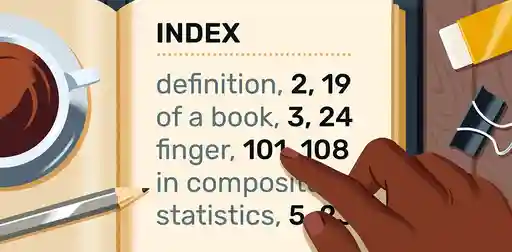
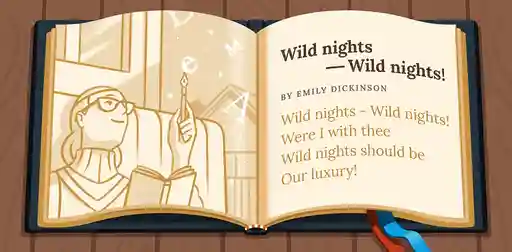
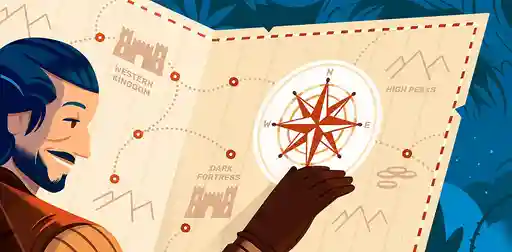





12 responses
Mars Dorian says:
05/12/2017 – 17:11
Superb post with a perfect timing--I'm formatting my own book via CreateSpace and need to learn so much yet. Thank you.
↪️ Reedsy replied:
26/02/2018 – 05:30
Really glad that our post helped, Mars!
James W says:
24/01/2018 – 02:21
Love the iPhone comparison in this article, it's a great way of thinking about it. If anyone's interested in seeing the different sizes/shapes suited to specific subtypes of children's books, there's a great guide over at https://kindlepreneur.com/how-to-write-a-childrens-book/.
Dave Temple says:
25/02/2018 – 00:05
Excellent and thorough article. Thank you for your time and research. I, like Mars Dorian before, agree that (finding) your article was "perfect timing," as I am also investigating new printers. I've used CreateSpace in the past, am familiar with Ingram, but also am researching TheBookPatch.com; they have some really good pricing. Cheers!
↪️ Reedsy replied:
26/02/2018 – 05:31
Awesome, research always pays off :) Thanks — and best of luck with your future book launch!
Brooke Goodwin says:
20/04/2018 – 17:15
I love this article! Very informative and easy to understand! I do have a question about margins though...What are the standard margin sizes? I'm currently writing a fiction novel I expect to be around 60,000-70,000 words. I thought changing the size of the Word document I'm typing it on might help me get a feel for how readers would read the novel once it's published. Also, I thought it's better to at least start thinking about how I might format it when I get to the publication process so I'm not spending extra time trying to figure out how I want it to look. Thanks!
↪️ Reedsy replied:
27/04/2018 – 11:37
Hi Brooke, great to have you as a reader. It depends on what standard book size you pick in the end, but typically gutter margins will range from .5"-.875" while outside margins range from .5" to .75". Here's an additional resource from CreateSpace on recommended margin sizes that you might find helpful: https://www.createspace.com/Products/Book/InteriorPDF.jsp Ultimately, it depends on what you personally feel allows for the best reading experience :) So our best recommendation is to experiment with it!
Phil Fishman says:
21/08/2019 – 18:35
Here's a question you probably haven't seen before. I am getting ready to publish a paperback through Ingram Spark and Amazon in the German language. I will go with a 5.5X 8.5 format, which is closest to the 14.8 cm X 21 cm standard German size. There will be no problem with Amazon; but there may be with Ingram. When the book is printed in Germany by Ingram's affiliate, it will be printed as a 14.8 cmX 21 cm. Since 14.8 cm is larger than 5.5 inches, and 21 cm is smaller than 8.5 inches, won't there be a distortion in the print. I can envisage the font being wider and shorter in the German edition. Am I correct? And, if so, how would you suggest I proceed? If I ask for a size other than standard, there could be a sizable upcharge.
Regina Clarke says:
08/09/2019 – 16:45
Answered all my questions!! Great article. Thank you.
Patti Jefferson says:
27/09/2019 – 16:06
Just a heads up that the graphic of children's book size says 5x8 but I believe its mislabeled since its square... 7.5 x 7.5 is more likely what it should be labeled.
↪️ Martin Cavannagh replied:
07/10/2019 – 15:47
Ach! Well spotted. We'll have our designer fix that ASAP. Thanks for letting us know.
nisa says:
27/01/2020 – 04:22
great article its help me! thank you!